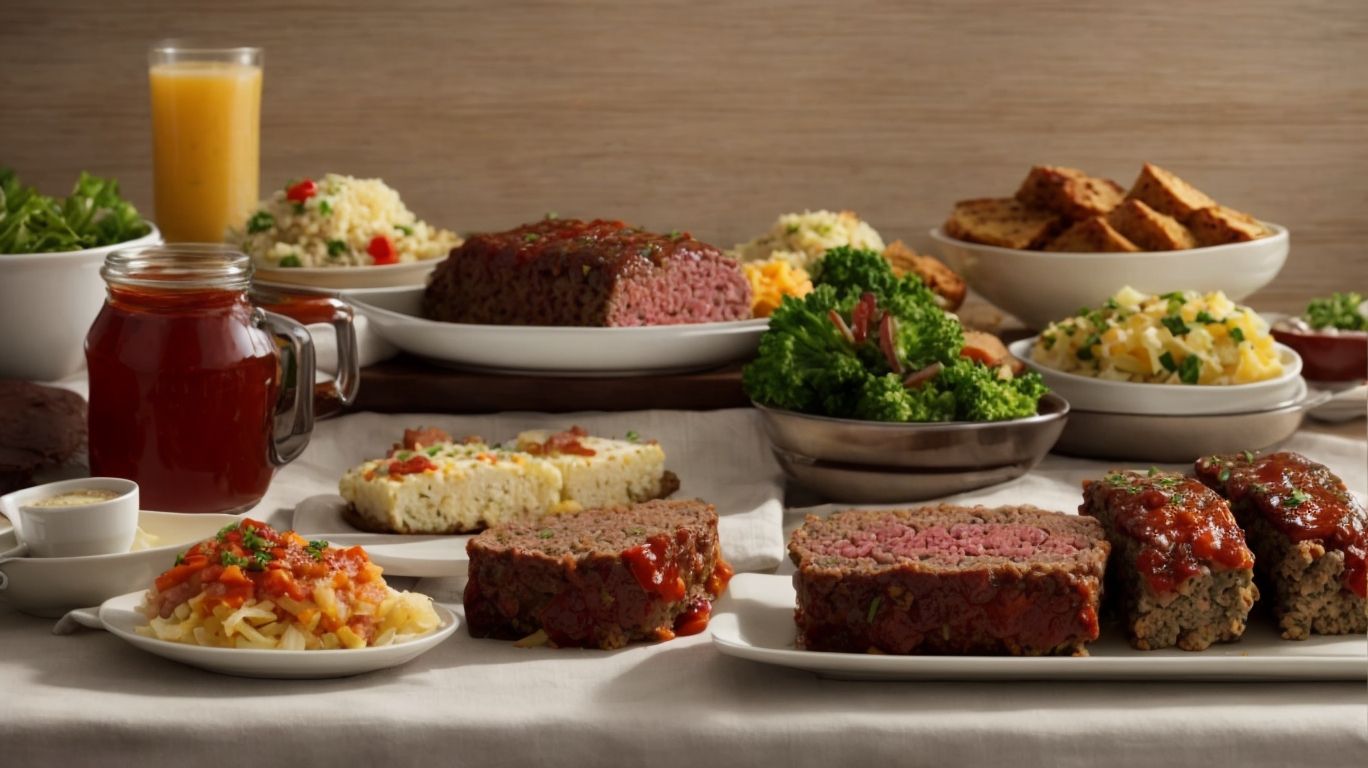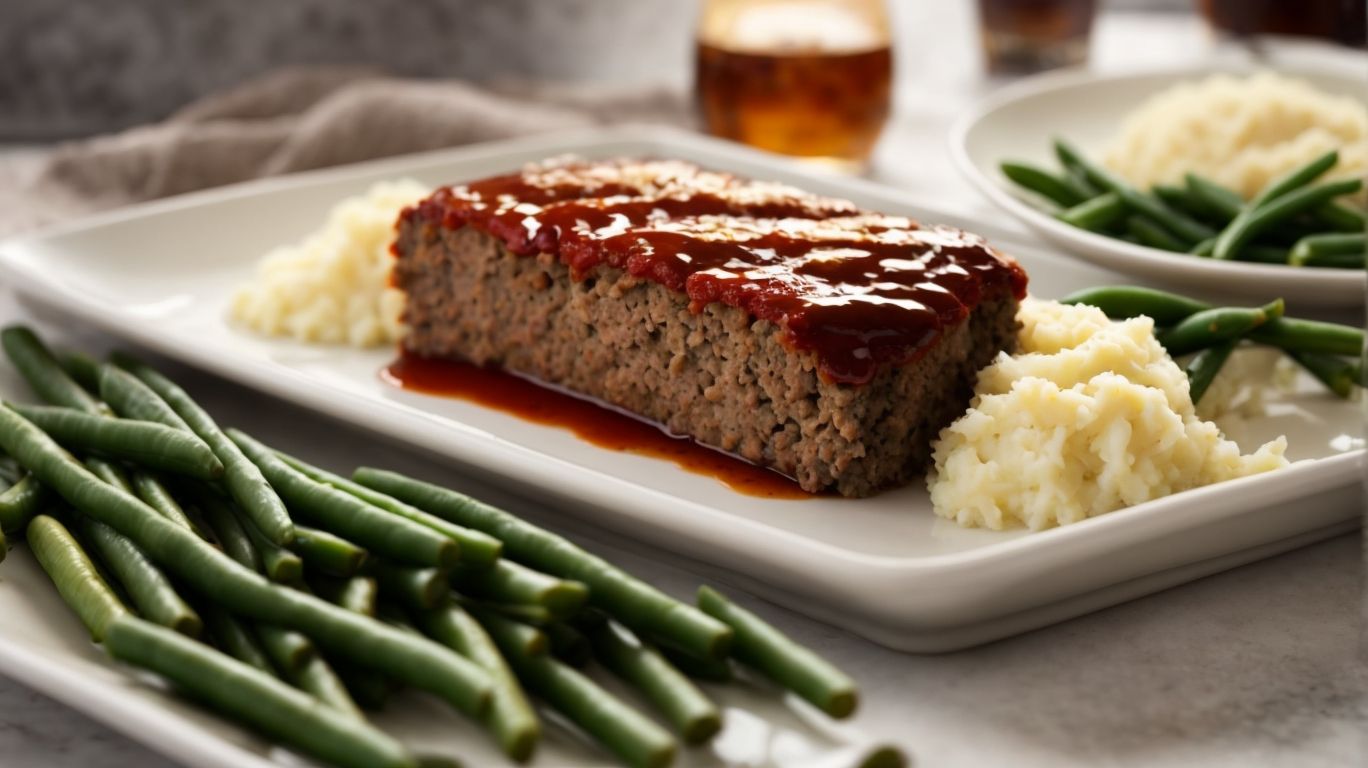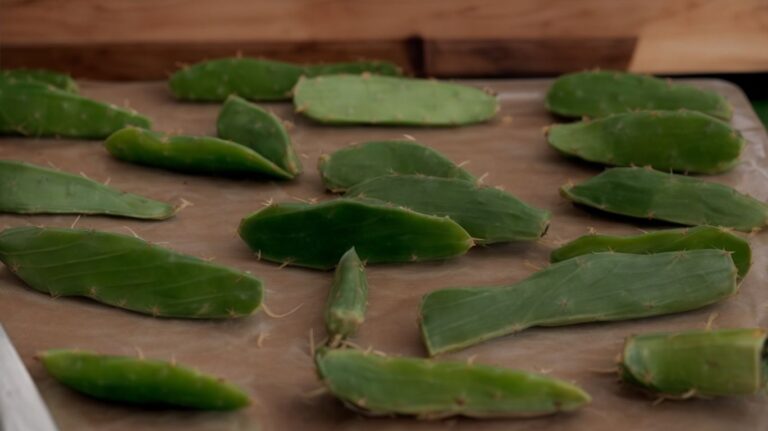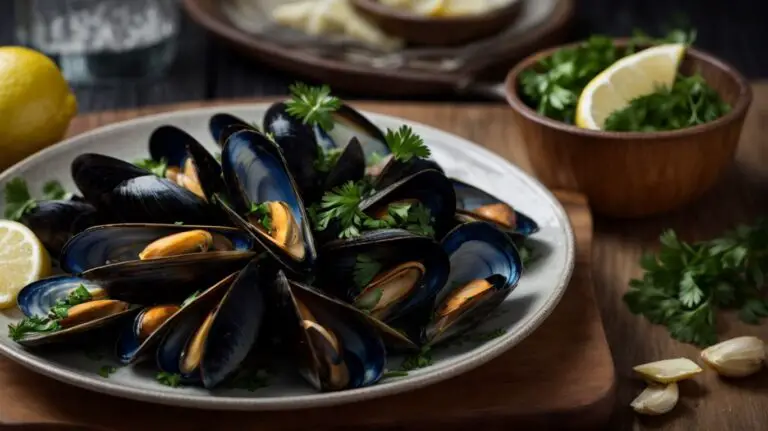How to Cook Meatloaf?
Are you a meatloaf enthusiast looking to perfect your recipe?
In this article, we will be exploring making the perfect meatloaf, with tips and tricks from award-winning culinary blogger, Chris Poormet.
From selecting the right meat to shaping and baking techniques, to creative variations and serving suggestions, this comprehensive guide will ensure that your next meatloaf creation is a delicious success.
Get ready to elevate your meatloaf game with expert advice from Chris Poormet!
Key Takeaways:
About the Author: Chris Poormet
Chris Poormet, the owner of Poormet.com and the acclaimed Culinary Blogger of the Year, is a former chef known for his expertise in food photography.
His passion for culinary arts drove him to establish Poormet.com, where he shares his gastronomic adventures, recipes, and food photography tips to a vast online audience. Chris’s unique perspective as a seasoned chef adds a touch of authenticity to his blog, making it a go-to destination for food enthusiasts seeking inspiration.
Having received the prestigious title of Culinary Blogger of the Year, Chris Poormet’s dedication to his craft is reflected in the accolades and recognition he has garnered in the culinary world. His background as a chef specializing in food photography not only sets him apart but also elevates the visual appeal of his delectable creations.
What is Meatloaf?
Meatloaf is a classic comfort food dish that combines ground meat, seasonings, and breadcrumbs, often served with a savory sauce for a hearty and satisfying meal.
One of the key components that contribute to a good meatloaf is the use of milk which helps to keep the meat moist during cooking, resulting in a tender texture. Additionally, Worcestershire sauce adds depth and umami flavor to the dish, enhancing its overall taste profile. The secret to a delicious meatloaf lies in the blend of spices and herbs used, such as garlic, onion, thyme, and parsley, which infuse the meat with rich and aromatic flavors.
What are the Main Ingredients of Meatloaf?
The main ingredients of meatloaf typically include ground beef, breadcrumbs, onions, and a blend of seasonings, while variations may involve unique additions and cooking tips for enhancing flavor and texture.
Other common ingredients that can be added to meatloaf to enhance its taste and moistness include eggs, milk, Worcestershire sauce, garlic, and mustard. These ingredients not only add depth of flavor but also help to bind the meat mixture together.
Experimenting with different types of ground meat, such as veal, pork, or lamb, can provide unique flavors and textures to your meatloaf. Mixing different meats can also create a more complex and interesting taste profile.
For a healthier twist, you can incorporate vegetables like bell peppers, carrots, or zucchini into your meatloaf. These additions not only boost the nutritional value but also add color and freshness to the dish.
How to Choose the Right Meat for Meatloaf?
Selecting the right meat for meatloaf is crucial, with ground beef being a common choice due to its flavor and texture, while considering the ideal meat to fat ratio to achieve a juicy and flavorful outcome.
In terms of ground beef, the meat to fat ratio plays a significant role in the overall taste and tenderness of the meatloaf. Opting for a leaner ground beef, such as 90/10 or 85/15, ensures a balance between flavor and moisture, preventing the meatloaf from becoming overly greasy or dry during baking.
The quality of the ground beef greatly influences the final dish’s flavor profile. Choosing grass-fed beef over conventional beef can enhance the richness and depth of the meatloaf, adding a distinctive savory note to each bite.
What Types of Meat Can Be Used for Meatloaf?
When making meatloaf, various meat options can be utilized, including ground beef, ground pork, or ground turkey, each imparting distinct flavors and textures to the dish.
Ground beef is a popular choice for meatloaf due to its rich flavor and juiciness, adding a classic taste to the dish. It’s versatile and blends well with various seasonings, making it a go-to option for many meatloaf recipes. On the other hand, ground pork brings a slightly different flavor profile with its fattier texture, contributing a moist and tender consistency to the meatloaf. For a leaner alternative, ground turkey offers a lighter taste while still maintaining the savory essence of traditional meatloaf.
What is the Best Meat to Fat Ratio for Meatloaf?
Achieving the perfect meat to fat ratio is essential for a moist and flavorful meatloaf, with a blend of lean and fatty meat contributing to the dish’s juiciness and succulence.
The meat to fat ratio in meatloaf preparation plays a crucial role in determining the final outcome of the dish. Lean meat provides structure and a clean meaty flavor, while fatty meat adds richness and moisture. It’s all about finding the right balance to achieve that ideal texture and taste. Too much fat can make the meatloaf greasy, while too lean of a ratio can result in a dry and tough loaf.
When combined correctly, the marriage of lean and fatty meat results in a meatloaf that is juicy, tender, and full of flavor. The balance between the two types of meat ensures that the dish is not only moist but also packed with delicious juices that enhance the overall eating experience.
What are the Key Steps in Making Meatloaf?
Creating a delicious meatloaf involves key steps such as preparing the meatloaf mixture with the right ingredients, shaping it into a loaf, and baking it to perfection, considering appropriate cooking times for optimal results.
Blending the meatloaf mixture is a crucial step that requires combining ground meat, breadcrumbs, eggs, onions, and seasonings in a large bowl. The mixing process ensures that all the ingredients are evenly distributed for a flavorful outcome. Once the mixture reaches a uniform consistency, it’s time to shape it into a loaf shape on a baking sheet or in a loaf pan. This step helps the meatloaf retain its form during the baking process and ensures even cooking throughout.
How to Prepare the Meatloaf Mixture?
Preparing the meatloaf mixture involves combining ground meat with a variety of seasonings, eggs, breadcrumbs, and minced onions to enhance the flavor and texture of the dish.
Seasonings play a crucial role in imparting depth and complexity to the meatloaf. Commonly used seasonings include salt, pepper, garlic powder, and herbs like thyme or oregano. The eggs act as a binding agent, holding the mixture together and ensuring a moist final product. Breadcrumbs not only help absorb excess moisture but also add structure and prevent the meatloaf from becoming too dense. The minced onions bring a subtle sweetness and savory depth, complementing the meat’s flavor.
How to Shape the Meatloaf?
Shaping the meatloaf properly using a loaf pan or baking sheet is essential to prevent it from falling apart during the cooking process and to ensure an appealing presentation.
When forming the meatloaf, make sure to press the mixture firmly into the pan or shape it uniformly on the baking sheet to avoid air pockets, which can lead to uneven cooking and a crumbly texture.
Creating a slightly higher dome shape in the center helps the juices distribute more evenly during baking, resulting in a moist and flavorful meatloaf.
Consider using breadcrumbs or oats as binding agents to hold the mixture together efficiently and maintain its structure when slicing into portions.
What is the Best Way to Bake Meatloaf?
Baking meatloaf at the right temperature, allowing it to rest after cooking, and using a meat thermometer to check for doneness are key elements in ensuring a perfectly cooked and juicy meatloaf.
In terms of temperature control, it is essential to preheat your oven properly to the recommended temperature before placing the meatloaf in. This ensures even cooking throughout. Allowing the meatloaf to rest for a few minutes after baking is crucial as it allows the juices to redistribute, resulting in a more flavorful and moist final product.
By employing a meat thermometer, you can accurately determine if your meatloaf is cooked to perfection. Insert the thermometer into the center of the meatloaf before the end of the cooking time to verify that it has reached the recommended internal temperature.
What are Some Variations of Meatloaf?

Credits: Poormet.Com – Juan Torres
Meatloaf offers a versatile canvas for culinary creativity, with variations ranging from vegetarian options to inventive toppings that add unique flavors and textures to the dish.
One exciting spin on the classic meatloaf involves using a base of lentils and quinoa instead of ground meat, creating a hearty and protein-rich alternative for vegetarians. Additionally, roasted vegetables like bell peppers, zucchini, and onions can be finely chopped and mixed into the loaf for added moisture and depth of flavor. For those seeking a more adventurous taste, consider topping your meatloaf with a tangy balsamic glaze or a spicy sriracha mayo. These flavorful additions elevate the traditional meatloaf experience, making each bite a delicious and memorable one.
How to Make a Vegetarian Meatloaf?
Crafting a vegetarian meatloaf involves using meat alternatives such as lentils, mushrooms, or nuts to create a flavorful and satisfying plant-based version of the classic dish.
When substituting these ingredients for meat, lentils bring a hearty texture, mushrooms add depth and umami flavor, while nuts contribute a rich nuttiness. To bind the mixture together, ingredients like breadcrumbs, oats, or flaxseed are commonly used as a replacement for eggs. A combination of spices such as garlic, onion, paprika, and herbs like thyme or rosemary can be added to enhance the savory profile.
Once the mixture is combined, it is formed into a loaf shape and baked until golden brown, creating a dish that is not only savory but also packed with protein, fiber, and essential nutrients.
What are Some Creative Meatloaf Toppings?
Elevate your meatloaf experience with creative toppings such as a tangy glaze, mustard-infused crust, or a sweet and spicy chili sauce that adds depth and complexity to the dish.
Experimenting with innovative meatloaf toppings opens up a world of flavor possibilities. For instance, a tangy glaze can bring a delightful balance of sweetness and acidity, enhancing the savory notes of the meat. A mustard-infused crust adds a zesty kick that cuts through the richness of the dish, offering a unique texture and taste. Similarly, a sweet and spicy chili sauce introduces a tantalizing blend of flavors, elevating the overall dining experience with its bold and aromatic profile.
These creative additions not only transform traditional meatloaf recipes but also add a touch of sophistication to the presentation. They showcase a thoughtful approach to condiment choices, highlighting how simple tweaks can result in extraordinary culinary outcomes. Whether you prefer a tangy, spicy, or savory twist, these toppings serve as a canvas for personalization, allowing you to tailor the dish to your taste preferences and culinary experimentation.
How to Serve and Store Meatloaf?

Credits: Poormet.Com – Dennis Allen
When serving meatloaf, consider pairing it with classic side dishes like mashed potatoes and green beans, and for storing leftovers, ensure proper freezing and reheating methods to retain the dish’s flavor and texture.
Meatloaf is a versatile dish that can be enjoyed in various ways. The comforting combination of meatloaf with creamy mashed potatoes and crisp green beans is a timeless favorite that never fails to satisfy. To elevate the meal further, you can add a savory gravy or tangy tomato sauce drizzled over the meatloaf.
In terms of saving any uneaten portions, proper storage is key. To store leftovers, wrap the meatloaf tightly in aluminum foil or plastic wrap, then place it in an airtight container or sealable freezer bag before freezing. When reheating, it’s best to thaw the meatloaf in the refrigerator overnight before heating it in the oven to maintain its juiciness and flavor.
What Sides Go Well with Meatloaf?
Pairing meatloaf with classic side dishes such as creamy mashed potatoes, buttery peas, and honey-glazed carrots creates a comforting and well-rounded meal that appeals to a wide range of palates.
These side dishes not only provide a flavorful contrast to the hearty meatloaf but also offer a variety of textures and colors to elevate your dining experience. The creamy mashed potatoes complement the savory meatloaf with their smooth texture, while the buttery peas add a pop of freshness. Meanwhile, the honey-glazed carrots bring a touch of sweetness that balances out the richness of the meatloaf.
By carefully selecting the right sides, you can create a harmonious blend of flavors that harmonize with the main dish, creating a meal that is both satisfying and delicious. These classic side dishes are tried-and-true favorites that have stood the test of time, making them perfect companions to a traditional meatloaf dinner.
How to Properly Store Leftover Meatloaf?
For leftover meatloaf, ensure proper storage by refrigerating or freezing the dish promptly, and when reheating, use gentle methods to retain the meatloaf’s moisture and flavor.
When storing leftover meatloaf in the refrigerator, wrap it tightly in plastic wrap or place it in an airtight container to prevent it from drying out or absorbing odors from other foods.
For longer storage, consider freezing the meatloaf. Divide it into smaller portions for easier reheating later. Label the containers with the date to ensure you use them within a safe timeframe.
When reheating, avoid prolonged exposure to high heat, which can toughen the meatloaf. Use gentle heat methods like low oven temperatures or microwave settings, and consider adding a small amount of broth or gravy to help retain moisture and enhance flavor.
Conclusion: Tips and Tricks for Perfect Meatloaf Every Time
Mastering the art of meatloaf preparation involves incorporating essential tips such as monitoring baking preferences, using a meat thermometer for accuracy, and adjusting serving sizes to cater to individual preferences.
When monitoring baking preferences, it’s crucial to pay attention to internal temperature rather than just relying on visual cues. A meat thermometer is your best friend here, ensuring that the meatloaf reaches the ideal doneness without being overcooked or underdone.
Customizing serving sizes allows for more personalized experiences, whether it’s creating individual portions for each diner or crafting a larger loaf for family-style meals. Presentation also plays a role in the overall enjoyment, so consider garnishing with fresh herbs or a flavorful glaze to elevate the dish.




